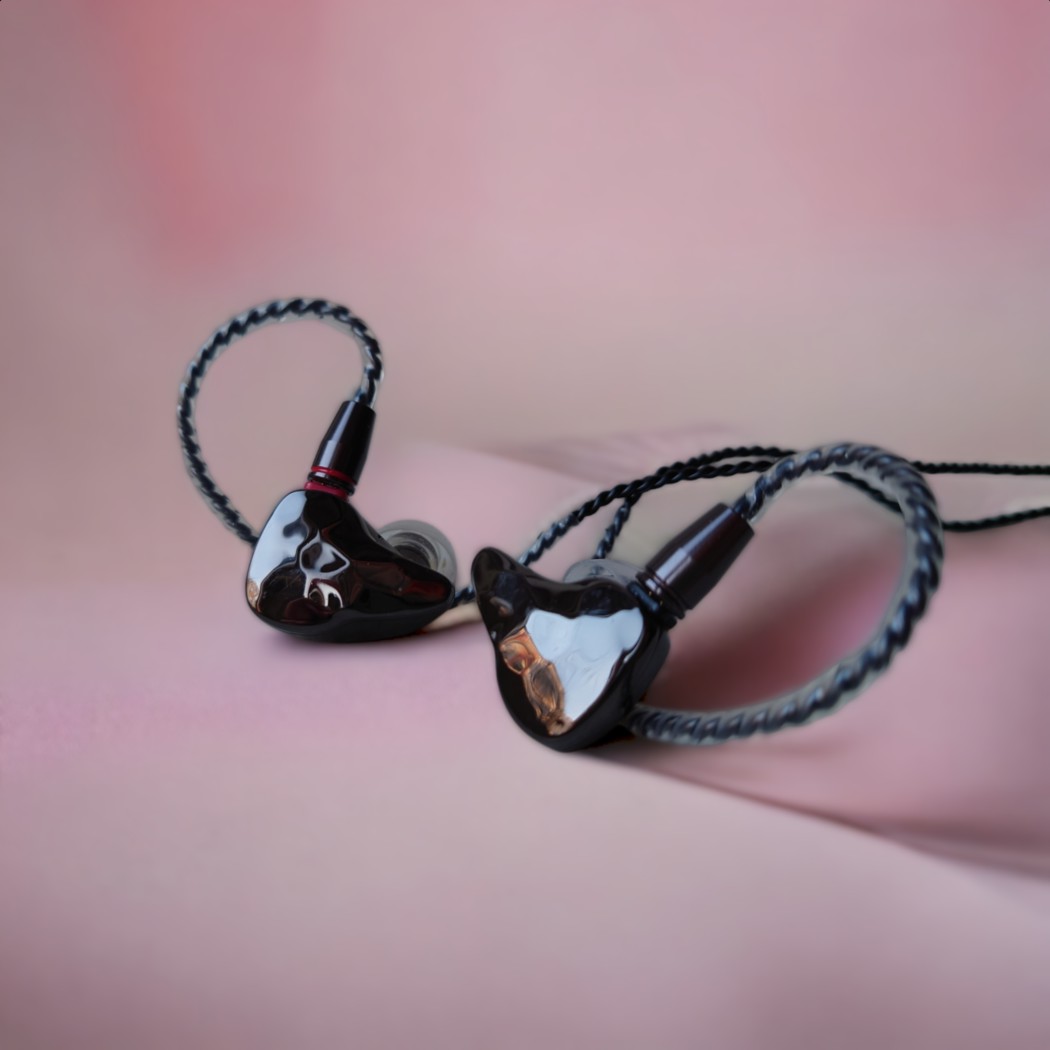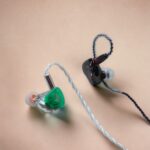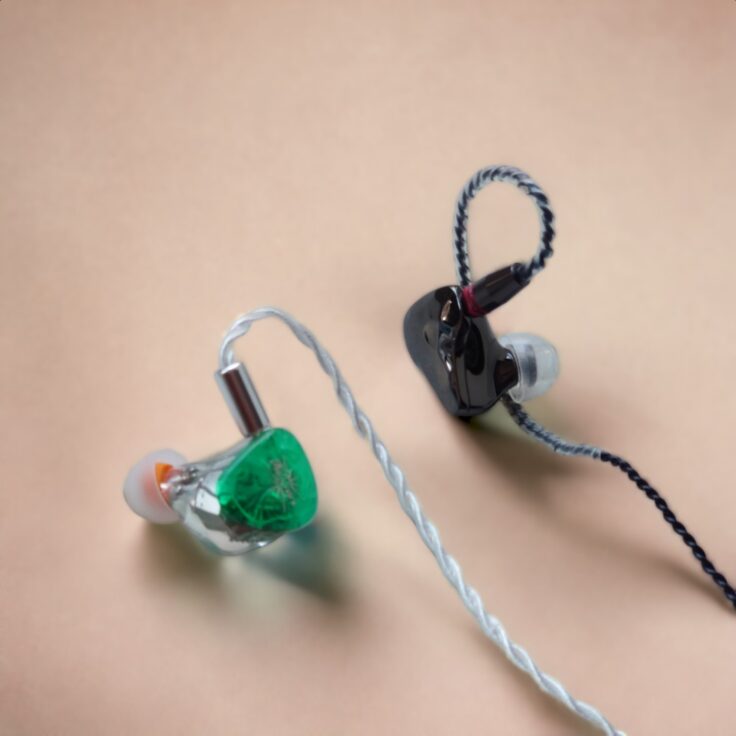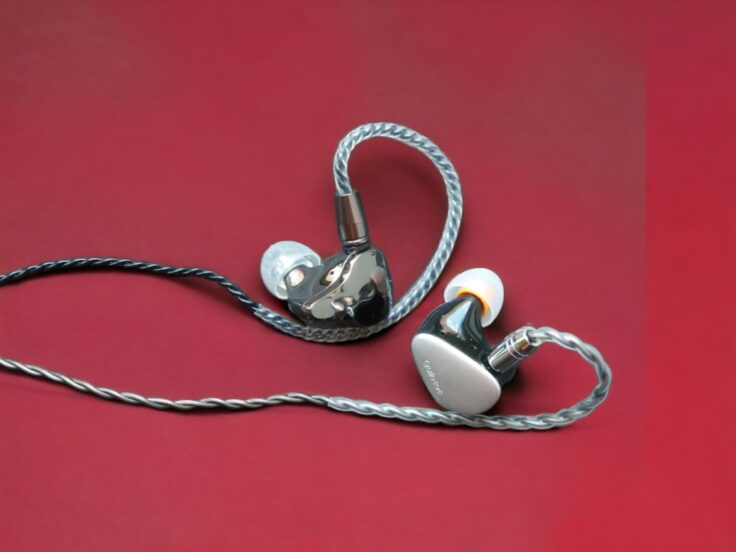This is an “honorary” review of the iKKO OH10 Obsidian. It’s being replaced by a newer version called OH10S. However, I have wanted to write about the OH10 for some time because it is one of my favourite sounding In Ear Monitors in its price range. It has been a long-standing favourite for many other listeners besides myself as well. Last year, iKKO released the OH10S and time will show if it will be as cherished as the predecessor.
The iKKO OH10 has two drivers per side; a single Dynamic Driver (DD) with a polymer titanium-coated diaphragm and a Knowles 33518 Balanced Armature driver. The housing is made of a copper alloy and covered with a very exclusive-looking skin-friendly coating.
When it comes to the build the OH10 is as mentioned metal (coated copper alloy). They are solid IEMs, which feel like you can throw them around. They’re not huge, but not small either. However, I do find the OH10 to sit comfortably in my ear despite its size and weight. The cable is extremely light and it feels like a bit too much of a contrast having such a thin cable with such solid IEMs.
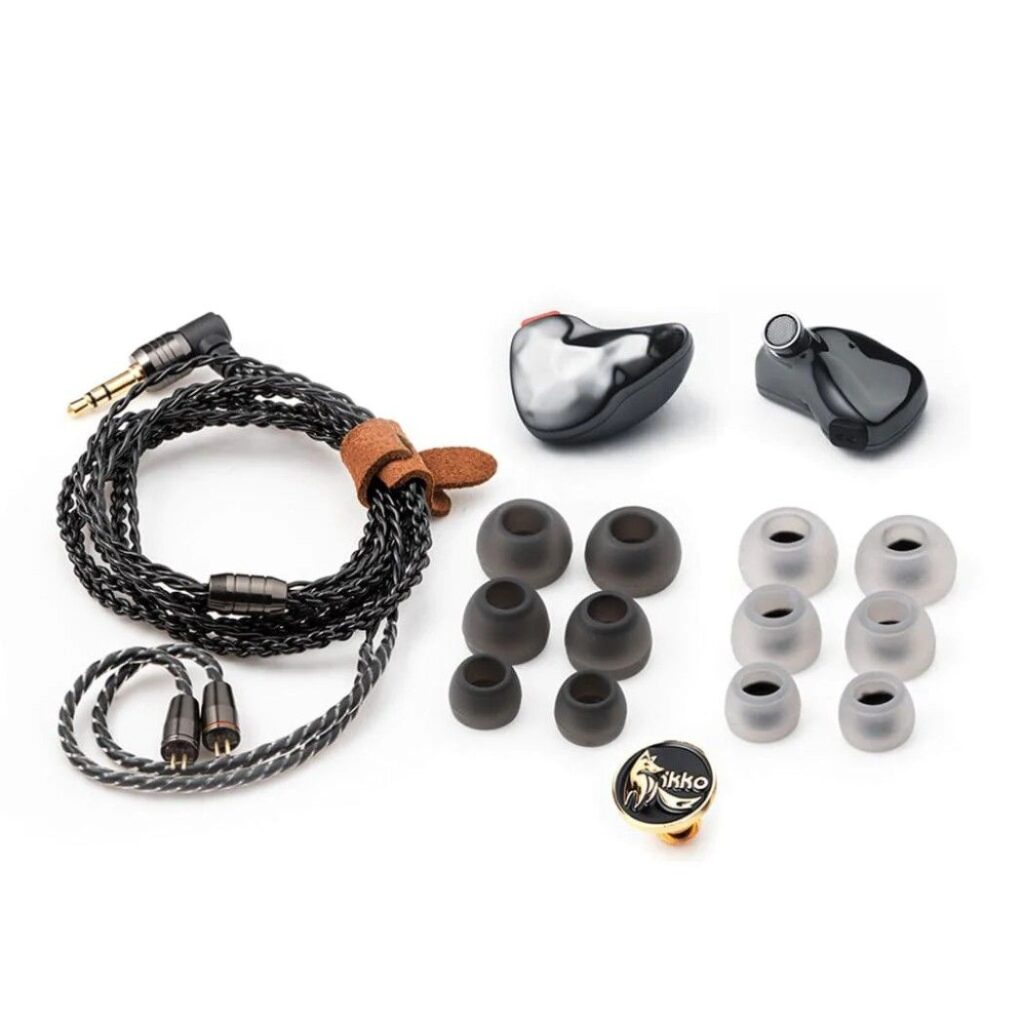
IKKO OH10 SPECIFICATIONS
- Impedance: 18Ω
- Sensitivity: 106dB/mW
- Frequency Response Range: 20-40KHz
- Cable Length: 1.2m
- Sound Principle: Hybrid Dynamic and Balanced Armature Drivers
- Connector: 0.78mm Two-Pin Connector
- Plug Diameter: 3.5mm
- Cable Material: 27um High-Purity Single Crystal Copper Plated Wire
- Balanced Armature Drivers: Knowles 33518
- Dynamic Drivers: Polymer Titanium-Coated Diaphragm
- Main Material: Copper Alloy with Skin-Friendly Coating
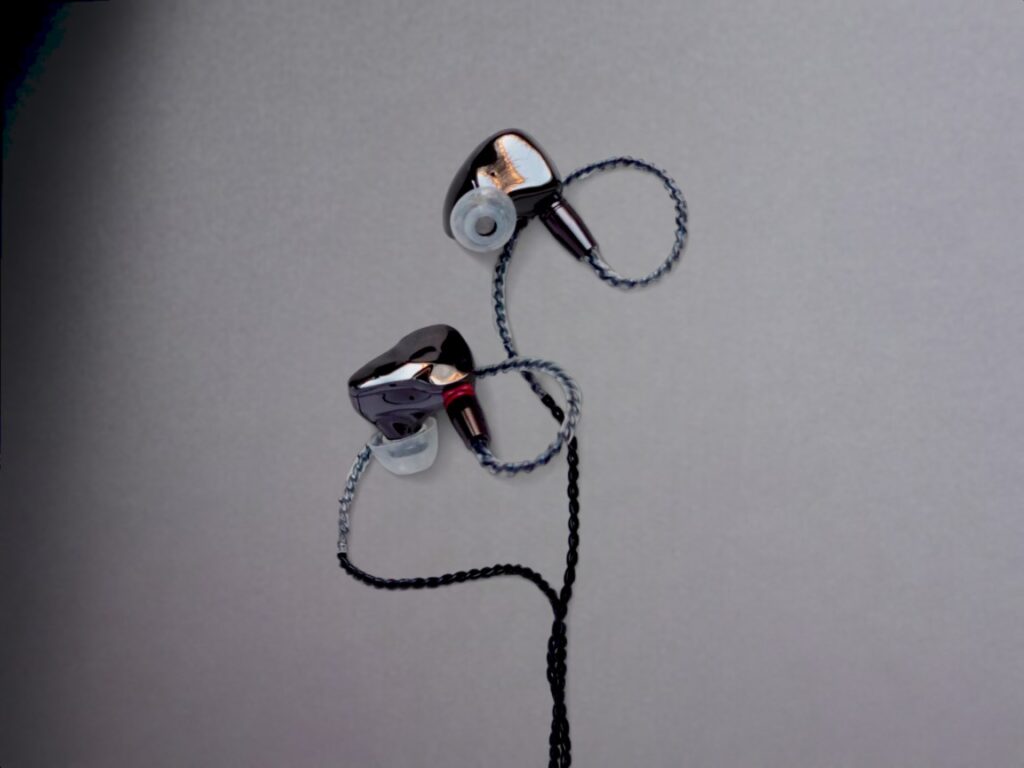
COMPARISONS
All comparisons were done with the Monolith THX AAA 887 with the RME ADI-2 DAC FS as a source. I tried different amplifiers with similar results.
SENNHEISER IE600 vs OH10
The Sennheiser IE600 is a single Dynamic Driver IEM, using the same True Response driver as the IE200 and IE900. It is made of 3D printed metal, but it’s very light and small.
Starting with the OH10, the sound is airy and well-balanced. The bass is tight and powerful when asked for. The soundstage is open, the treble is crisp and clear. The separation between instruments is good.
Moving over to the IE600, the bass is fuller and has more bloom. The mid-range is less upfront, it sounds like it’s got less energy in the upper mids. The treble might be a bit more nuanced and liquid with the IE600.
The detail level overall is similar. The IE600 has more resolution in the treble, the OH10 has more texture in the bass.
The soundstage of the IE600 is smaller and a bit more focused, except for the bass. In many ways, I often prefer the iKKO, especially the tuning and the bass. The treble is a little bit splashy in direct comparison to the IE600 but the rest is all very nice.
In terms of comfort, the IE600s are way lighter, but more fiddly to insert into my ears due to the rotating MMCX connectors.
KIWI EARS ORCHESTRA LITE vs OH10
Compared to the Orchestra Lite, the OH10 has a more V-shaped sound profile. There’s more focus on the bass and highs. With the Orchestra Lite, the mid-range gets more attention. I find the OH10 to sound more dynamic and fun, the Orchestra Lite is more neutrally tuned and more even across the frequency spectrum.
The treble is clear and crisp on both. They also have nice, smooth mids, but the midrange is less up front with the OH10. The bass is good on both, but more elevated with the OH10. The soundstage feels bigger with the Orchestra Lite. Instrument separation and imaging are a little better with the OH10.
I really like both of these IEMs. They are quite different, though. For a neutral and smooth sound with a wider soundstage, the Orchestra Lite is the better choice. For a more “fun” tuning, with more bass and better imaging, the OH10 is great.
KIWI EARS QUINTET vs OH10
The OH10 offers a deep and warm bass with a spacious sound, particularly highlighted in tracks like “Fading Sorrow” by Marcin Wasilewski Trio and “Black Crow” by Cassandra Wilson. In comparison to the Quintet, the OH10 has a darker sound with more bass emphasis, while the Quintet provides a more balanced tonality and even tighter bass.
The OH10 excels in presenting strings with powerful rendering and good instrument separation in classical pieces, but the Quintet offers even better imaging and detail.
In songs like “Don’t Panic” by Coldplay, the Quintet delivers ultra-precise vocals and tight bass, whereas the OH10 has a fuller bass but less detail and nuance in the midrange.
To conclude, they have a lot in common. Both are dynamic and snappy. They both have great imaging and bass, smooth and detailed mids and clear highs. However, they also have a difference in tonal balance. The Quintet is quite neutral, the OH10 is darker and lusher sounding, but at the same time slightly more V-shaped with the mids a bit drawn back in the mix.
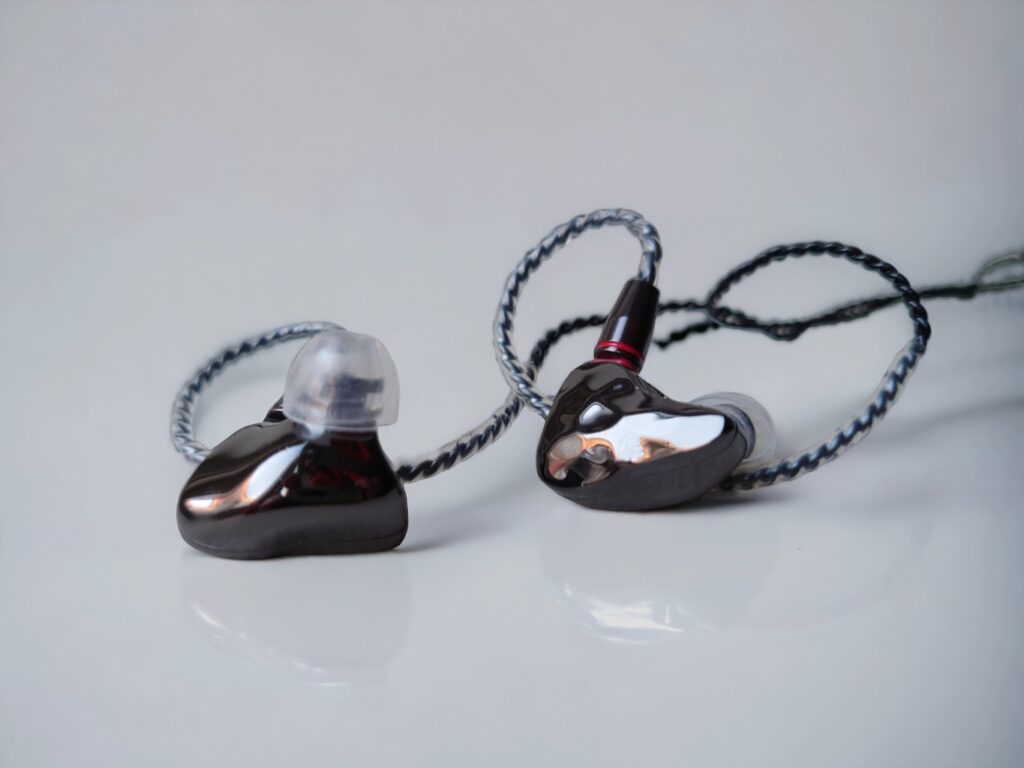
CONCLUSION
The iKKO OH10 its an excellent sounding IEM. It has an open and large soundstage. The imaging is very good. The sound signature is a bit on the darker and mellower side of neutral, in a way I really like. The treble is still detailed and clear, but not intrusive. The midrange is sweet and lush, the bass is detailed and plentiful, but not overdone.
All in all, I really like the iKKO OH10 Obsidian and they are among my definitive favorites in the price range. They are solid and beautiful, and also comfortable to wear despite the weight.
The newer OH10S has a very similar setup with a revised 10mm dual-magnet, titanium-coated dynamic driver and the same Knowles 33518 balanced armature drivers. It also has a copper housing, albeit with glass and a PVD Coating and very different aesthetics.
More info: iKKO OH10 Obsidian
Product link: iKKO OH10S
We make earnings through affiliate links and any purchase you make on Amazon or Linsoul clicking one of our links will give us a small provision at no cost to you.
We only get a provision for items that are not returned, so there’s no incentive for us to recommend something that’s not good.
Linsoul : Headphones, Earbuds, Wireless Earbuds, Desktop DAC/AMP, Portable DAC/AMP, Digital Audio Players,
Amazon: Headphones, IEMs, Headphone Amplifiers, Home Audio or Anything else.
.
If you enjoyed this article or other content on The Headphoneer, you might consider leaving a small donation to keep this website up and running. No donation is too small. Thanks for supporting us!
If you like our work please follow us on Instagram, Facebook and Twitter , it will help us grow. Sharing is caring 🙂


